| Line 467: | Line 467: | ||
<div class="row"> | <div class="row"> | ||
| − | <div class="col-md-3 col-md-offset- | + | <div class="col-md-3 col-md-offset-3"> |
<div class="team-member wow fadeInLeft" data-wow-duration="500ms" data-wow-delay=".3s"> | <div class="team-member wow fadeInLeft" data-wow-duration="500ms" data-wow-delay=".3s"> | ||
<div class="team-img"> | <div class="team-img"> | ||
| Line 475: | Line 475: | ||
<p class="team_designation">School of Bioengineering</p> | <p class="team_designation">School of Bioengineering</p> | ||
<p class="team_text">Supervising bacteria-phage modelling.</p> | <p class="team_text">Supervising bacteria-phage modelling.</p> | ||
| + | <p class="social-icons"> | ||
| + | </p> | ||
| + | </div> | ||
| + | </div> | ||
| + | <div class="col-md-3 col-md-offset-3"> | ||
| + | <div class="team-member wow fadeInLeft" data-wow-duration="500ms" data-wow-delay=".3s"> | ||
| + | <div class="team-img"> | ||
| + | <img src="https://rawgit.com/Macbit/Edinburgh_OG_iGEM17/master/images/team/russel.jpg" class="team-pic" alt=""> | ||
| + | </div> | ||
| + | <h3 class="team_name">Dr Russell Brown</h3> | ||
| + | <p class="team_designation">School of Biological Sciences</p> | ||
| + | <p class="team_text">Supervising P1 phage construction.</p> | ||
<p class="social-icons"> | <p class="social-icons"> | ||
</p> | </p> | ||
Revision as of 17:16, 28 August 2017
Antibiotic revolution: a molecular toolkit to re-sensitise
Methycillin resistant S.aureus (MRSA)
Vancomycin resistant S.aureus (VRSA)
Klebsiella pneumoniae
Pseudomonas aeruginosa
Enterococcus faecalis/faecium
Acinetobacter baumanii
Modular molecular toolkit for re-sensitisation of antibiotic-resistant pathogens using CRISPR delivered by a two-phage system.
Read moreABOUT PhagED
The world is currently facing a future where antibiotics no longer work and basic infections cannot be treated. Many of the most dangerous diseases which are not treatable arise from the hospital environment. This is because the bacteria have had lots of exposure to antibiotics, allowing them time to evolve genes which can help them survive in the presence of these drugs. We therefore want to tackle this problem of the 'super bugs' found in our hospitals, otherwise known as the ESKAPE pathogens.
We will do this by developing a spray which will contain modified phages. When that phage enters the cell, CRISPR-Cas system will cut up the genes which are giving the bacteria resistance to antibiotics. We then add another phage to ensure this system is maintainable.
By using this spray, we hope to re-sensitise these dangerous antibiotic resistant bacteria to the drugs again, allowing conventional antiobiotics to work. This would mean we would no longer need to develop costly new antibiotics, and avoid the coming doom of a world where a UTI is a death sentence. Neat eh?!

TAKE A CLOSER LOOK
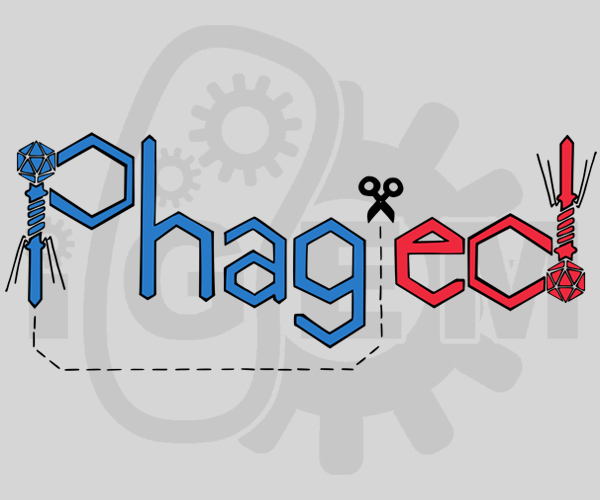
Project
Get to know PhagED better.
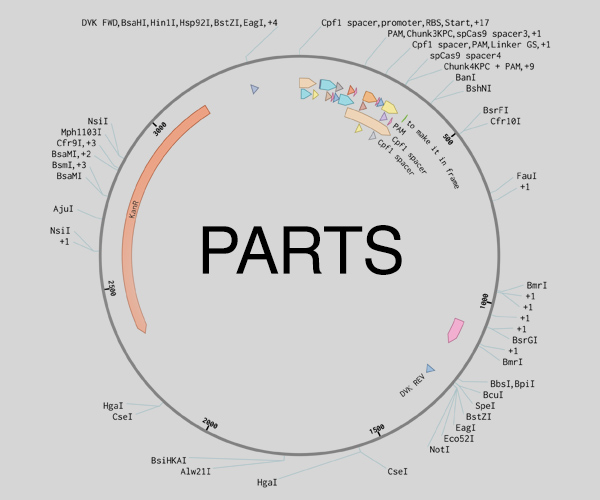
Parts
Blocks of DNA that we've used.

Safety
Safety always comes first.
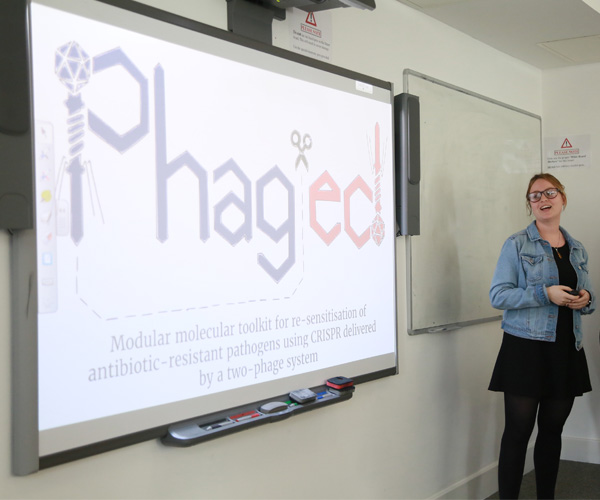
Human Practices
How does PhagED fit into the context of our lives?
Meet The Team
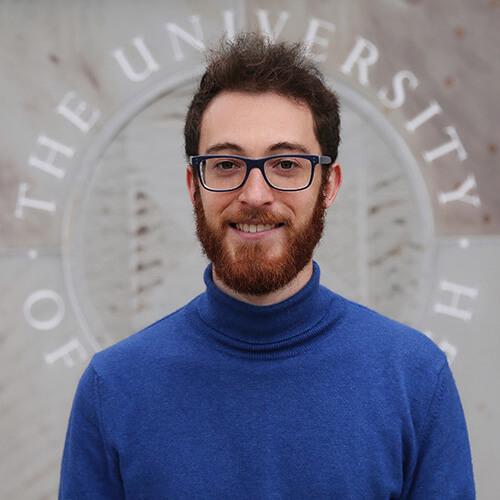
Filippo Abbondanza
MSc Synthetic Biology & Biotechnology
Developing the lysoenic lambda phage carrying the FnCpf1 CRISPR system.

Erin Corbett
MSc Synthetic Biology & Biotechnology
Engineering E. coli to create our mock pathogen testing platform, and engineering the lytic T7 phage.

Yunqi He
MSc Biochemistry
Developing the lysogenic P1 phage carrying spCas9 CRISPR system.

Ti He
MSc Biotechnology
Developing the lysogenic lambda phage carring saCas9 CRISPR system.

Lydia Mapstone
MSc Synthetic Biology & Biotechnology
Engineering E. coli to create our mock pathogen testing platform and engineering the lytic T4 phage using BRED.
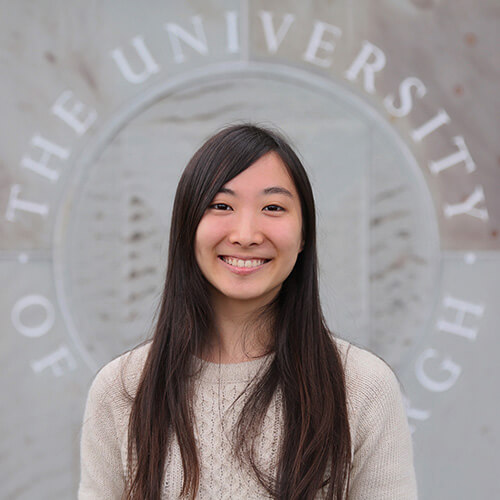
Yuri Matsueda
MSc Biotechnology
Engineering P1 lysogenic phage with CRISPR-SaCas9 system to target resistance gene fragments.
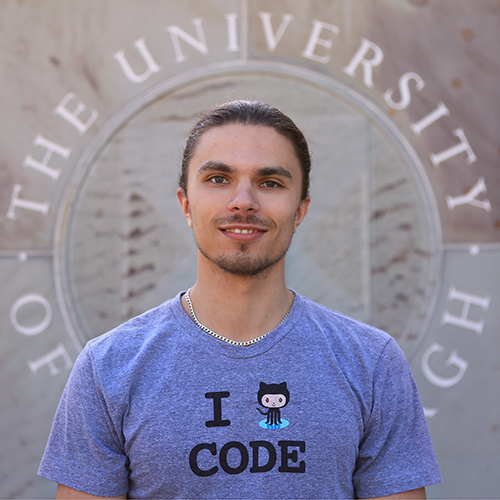
Anton Puzorjov
MSc Bioinformatics
Building a model of bacteria-phage interactions in two-step re-sensitisation combining both lysogenic and lytic phages.
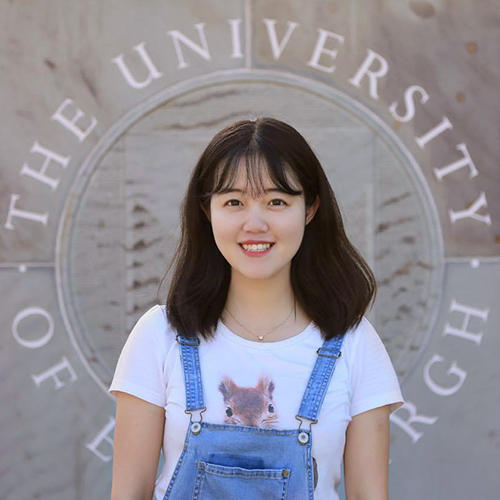
Yating Wang
MSc Drug Discovery & Translational Biology
Engineering P1 lysogenic phage with CRISPR-Cpf1 system to target resistance gene fragments.

Owen Yeung
MSc Synthetic Biology & Biotechnology
Developing the lysoenic lambda phage carrying the SpCas9 CRISPR system.
Supervisors
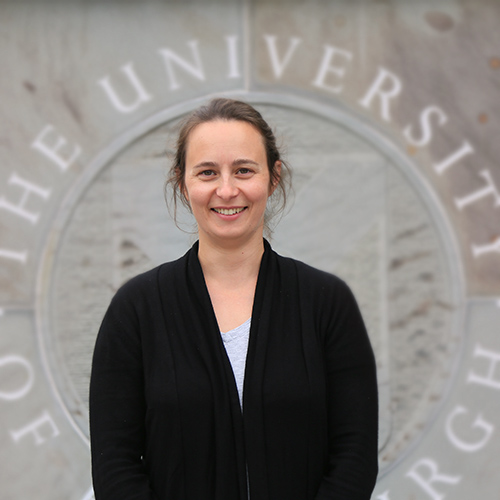
Dr Elise Cachat
School of Biological Sciences
Academic supervisor.

Dr Heather Barker
School of Biological Sciences
Supervising lab work.

Holly Robertson-Dick
Industrial Liaison
Supervising iGEM administrative work.

Dr John White
School of Chemistry
Supervising phage work.
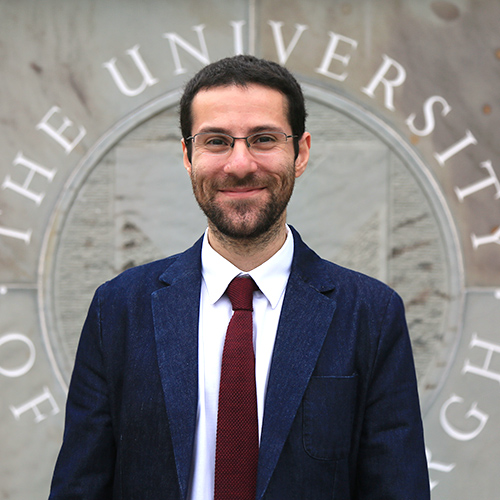
Dr Filippo Menolascina
School of Bioengineering
Supervising bacteria-phage modelling.
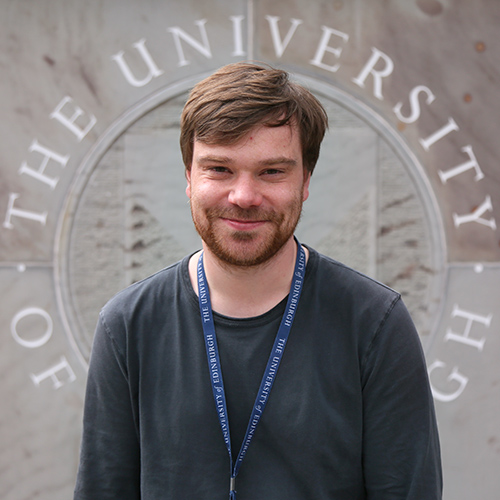
Dr Russell Brown
School of Biological Sciences
Supervising P1 phage construction.
Sponsors
We are very thankful to those who are helping us to make it happen.



DO YOU WANT TO HELP US TURN IT INTO REALITY?
We will be more than happy to accept any kind of support from you either in cash or as free/discounted services or consumables.
-
-
Bronze
£ 500- ✔ Logo on website
- ✔ Recognition on social media
- ✘ Logo on t-shirts
- ✘ Logo on media content
- ✘ Logo on presentation
- ✘ Logo on official poster
-
-
-
Silver
£ 1,000- ✔ Logo on website
- ✔ Recognition on social media
- ✔ Logo on t-shirts
- ✘ Logo on media content
- ✘ Logo on presentation
- ✘ Logo on official poster
-
-
-
Gold
£ 2,000- ✔ Logo on website
- ✔ Recognition on social media
- ✔ Logo on t-shirts
- ✔ Logo on media content
- ✔ Logo on presentation
- ✘ Logo on official poster
-
-
-
Platinum
£ 2,500- ✔ Logo on website
- ✔ Recognition on social media
- ✔ Logo on t-shirts
- ✔ Logo on media content
- ✔ Logo on presentation
- ✔ Logo on official poster
-


